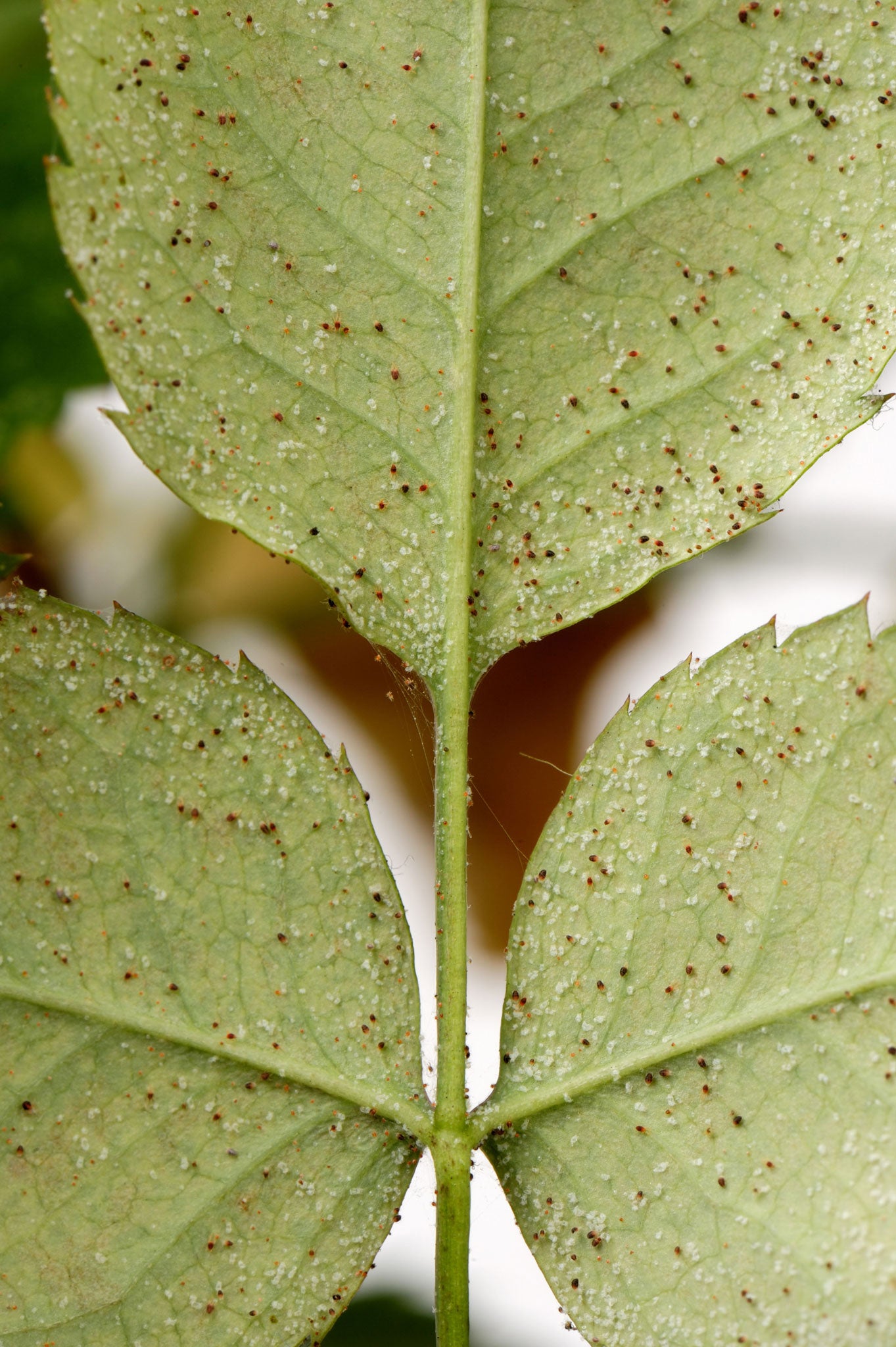Anna Pavord's A to Z of pests and problems: Q and R are for quarrels, rain and red spider mites

Quarrels
Who left weedkiller in the watering can? Who mowed over the primroses? Who forgot to open the greenhouse door? These kind of quarrels are easier to get out of the system than more insidious arguments. Can you plant a magenta geranium next to a yellow potentilla? Should there be scillas or grape hyacinths under the Magnolia stellata? You could compromise on puschkinias. Or divide and rule over separate areas of the garden.
Rabbits
In North Africa and Spain, where rabbits were first invented, they were presumably content with whatever herbage lay to hand. Now they have acquired expensive tastes. They turn away from succulent grasses, gourmet dandelions, melting sow thistles and feast instead on our pinks and violas. If they helped with the weeding from time to time, they would be most welcome to share the garden, but their targets are cruelly chosen.
The problem with rabbits is that once they start, they can't stop. If they actually ate all the flowers they bite off, it would be easier to take. But they don't. Pinks (a favourite target) are scissored off and left to wilt. Bulbs such as triteleia and allium lie beheaded on the path.
Now, I cover all the pinks with openwork bamboo cloches (you can get them from Andrew Crace on 01279 842685 or andrewcrace.com), but the best defence against rabbits is an intelligent dog. Or a cat. I tried to lure over our neighbour's cat, a tom and a good hunter, but he was too busy dealing with squirrels and wasn't interested.
Another solution is to turn to Graham Stuart Thomas's list of rabbit-proof plants (it's in his Perennial Garden Plants published by Dent in 1990). Alchemilla (yawn), bergenia (never in a millionf years), pampas (I'm not that desperate), mallow (coarse beyond bearing), sedum (oh help – I'm saving that for my nineties). No – I'm being unfair. There are some superb plants in the list: crinum, helianthus, epimedium, peony. The answer is to plant more of the stuff that rabbits don't like.
Rain
There's either too much of it or too little. Last year the rain was catastrophic. This summer, in our neck of the woods, there's been practically none. It's odd to go into autumn with rock-hard soil. But for plants (as well as the pocket), rainwater is a better option than tap water. Collect as much as you can from roofs. Plastic water butts are cheap and can be linked together, if you've got enough space. Plants in a greenhouse will need more watering than plants outside, so it makes sense to have one of your water stores close by. We have a galvanised trough 90cm x 45cm by 40cm deep, fed from the greenhouse roof. It's not covered, as it's much quicker to dip a can than to wait for it to fill from a tap.
Red spider mite
Red spider mites are most likely to be a nuisance in conservatories, greenhouses and polytunnels. They feed on the leaves of peaches and nectarines, cucumbers, tomatoes, aubergines, chillies and other greenhouse crops. Although only about 1mm long, they quickly build up into huge colonies. Each female can lay up to 100 eggs and only eight days later the eggs are adults. They feed by sucking sap from plants so leaves become mottled and bleached, then die. When the mite is deeply entrenched it'll start spinning fine webs over plants.
They are at their most active between June and September and thrive in hot, dry environments. 'Damping down' your greenhouse (hosing the floor to increase humidity) is one of the simplest ways to ward off red spider mite. If they are already with you, then try a biological control, in this case another, bigger mite (Phytoseiulus persimilis).
These work most effectively in temperatures around 20C/68F and positively thrive in high humidity (another reason for damping down a greenhouse). They are extremely effective predators as they will feed on their prey at any stage, juvenile or adult. In the right conditions, they also reproduce almost twice as fast as the red spider mite.
Replant disease
This is the reason that gardeners are told not to put a new rose bush where an old one has recently been growing. The new plant never develops a proper root system and struggles, then dies. Cherry trees, apples, peaches, pears and plums (all members of the same family – Rosaceae) are also susceptible.
The current theory is that soil pathogens build up slowly round the old plant, but it survives them because it can outgrow them. But when a young plant goes into the same position, a big population of pathogens is already waiting for it and the newcomer is not robust enough to fight them off.
You can make a new planting hole, at least 60cm/24in across and 30cm/12in deep. You can line the new hole with a cardboard box with the bottom folded back. You can add bonemeal or hoof and horn to give the plant a boost. You can add mycorrhiza (good soil organisms to fight the bad ones). And you may be able to buy your plant on a rootstock that shows some resistance to the disease (apples on M27 stock; cherries on 'Colt' stock). Be prepared to accept that none of these measures will overcome the problem.
Join our commenting forum
Join thought-provoking conversations, follow other Independent readers and see their replies
Comments